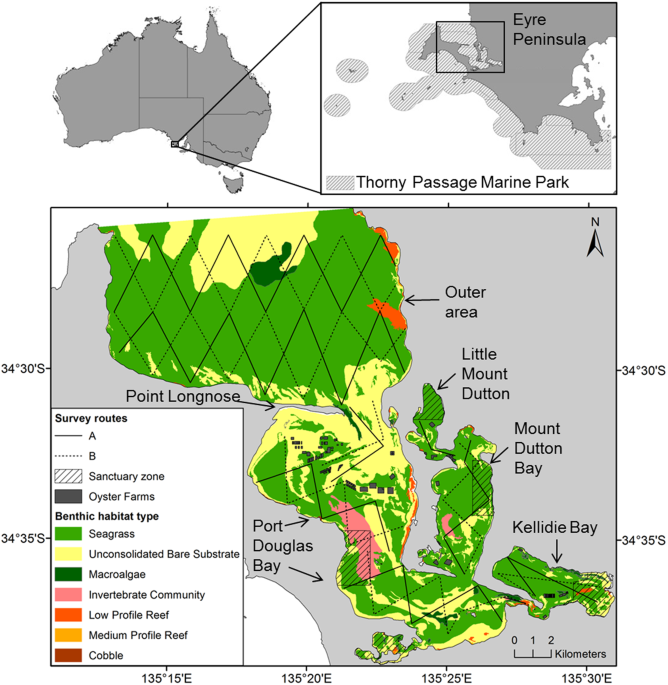
Abstract: "As marine predators experience increasing anthropogenic pressures, there is an urgent need to understand their distribution and their drivers to inform spatial conservation planning. We used an ensemble modelling approach to investigate the spatio-temporal distribution of southern Australian bottlenose dolphins (Tursiops cf. australis) in relation to a variety of ecogeographical and anthropogenic variables in Coffin Bay, Thorny Passage Marine Park, South Australia. Further, we evaluated the overlap between current spatial management measures and important dolphin habitat. Dolphins showed no distinct seasonal shifts in distribution patterns. Models of the entire study area indicate that zones of high probability of dolphin occurrence were located mainly within the inner area of Coffin Bay. In the inner area, zones with high probability of dolphin occurrence were associated with shallow waters (2–4 m and 7–10 m) and located within 1,000 m from land and 2,500 m from oyster farms. The multi-modal response curve of depth in the models likely shows how the different dolphin communities in Coffin Bay occupy different embayments characterized by distinct depth patterns. The majority of areas of high (>0.6) probability of dolphin occurrence are outside sanctuary zones where multiple human activities are allowed. The inner area of Coffin Bay is an important area of year-round habitat suitability for dolphins. Our results can inform future spatial conservation decisions and improve protection of important dolphin habitat."
Read More: https://www.nature.com/articles/s41598-018-34095-2
No comments:
Post a Comment